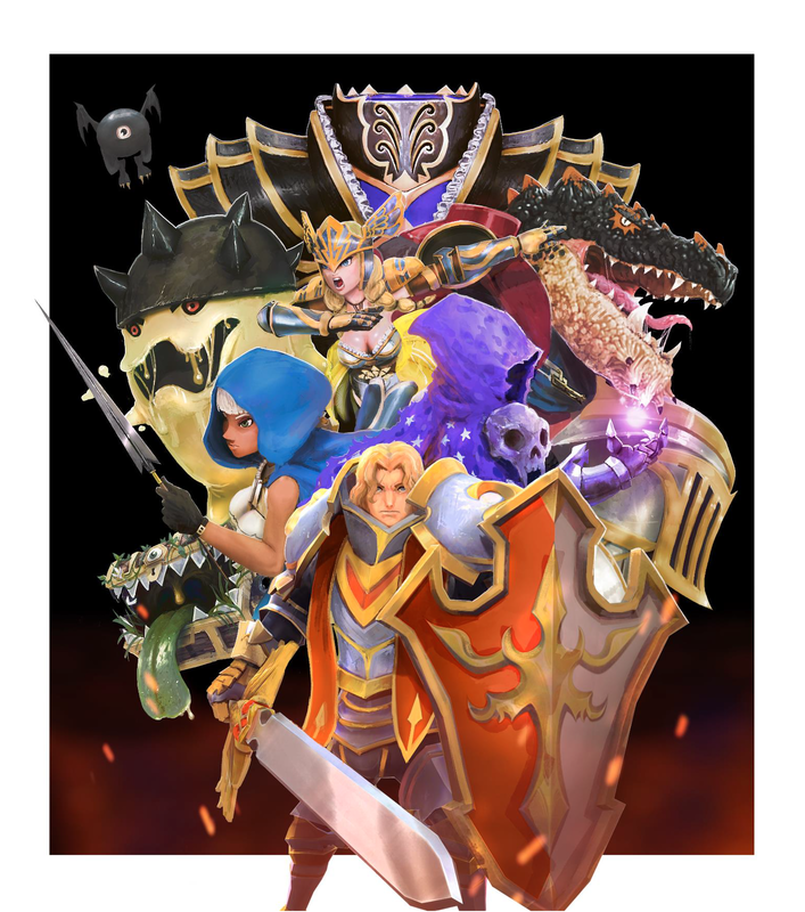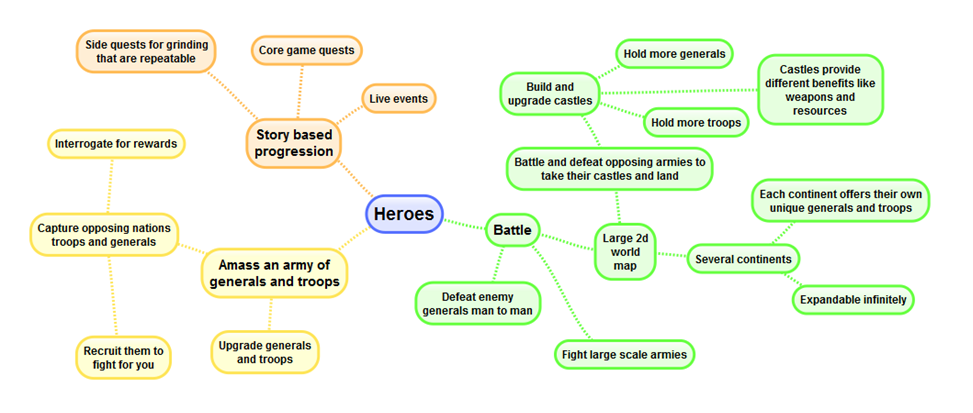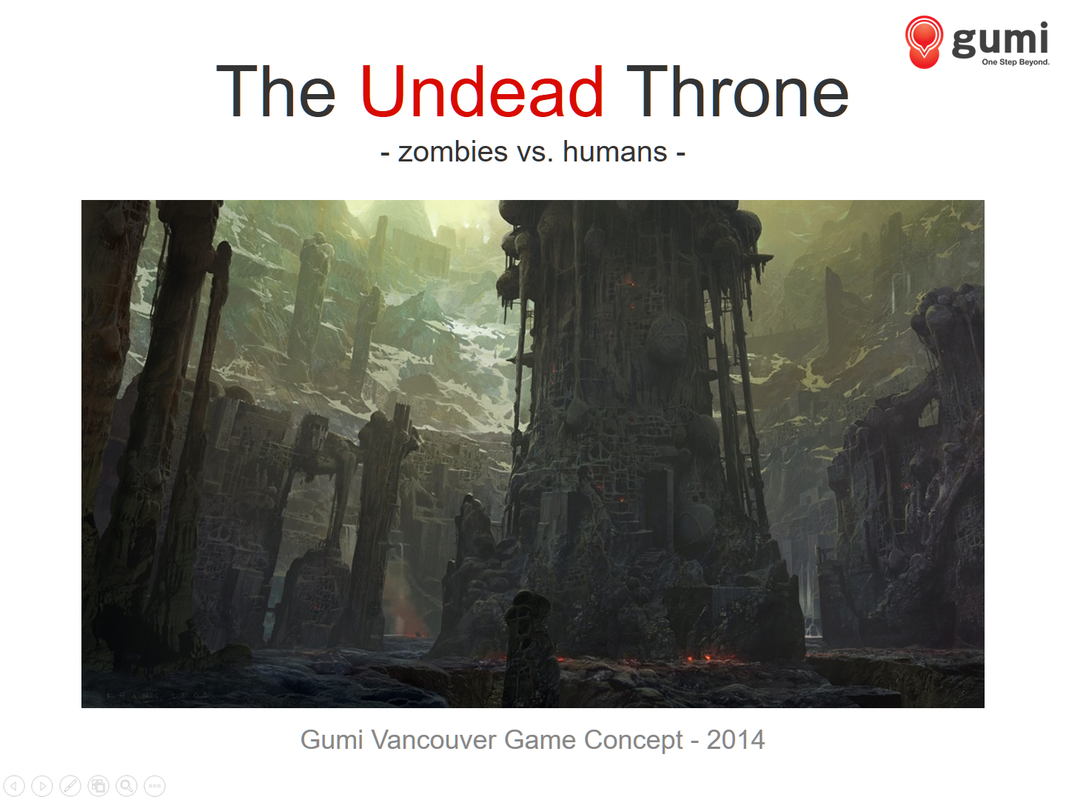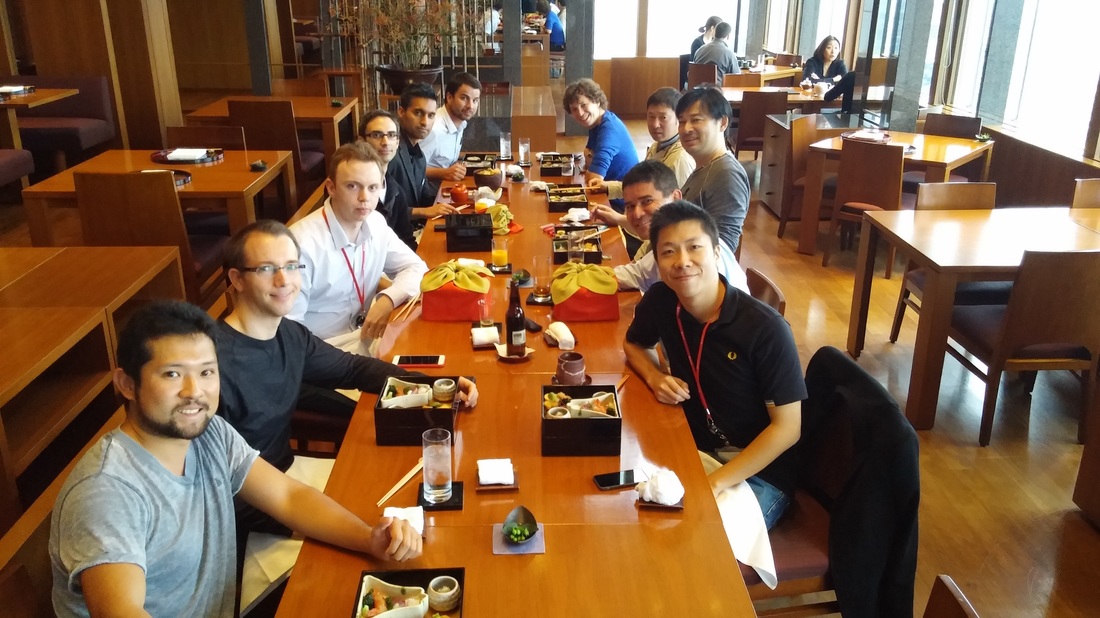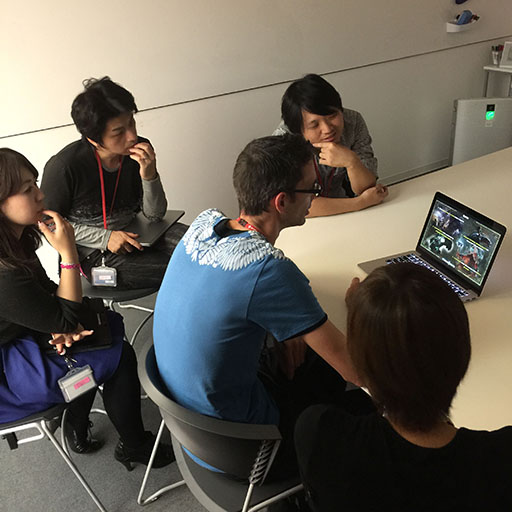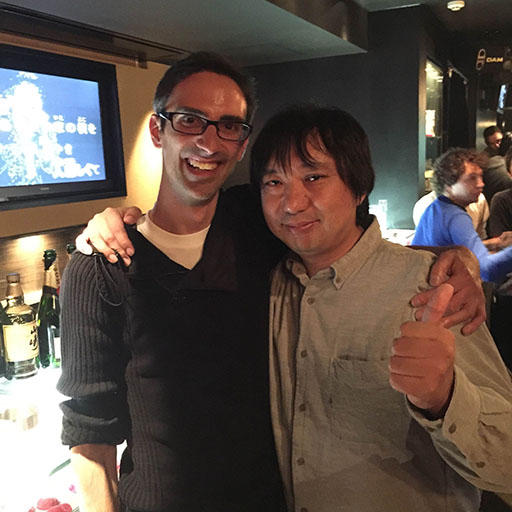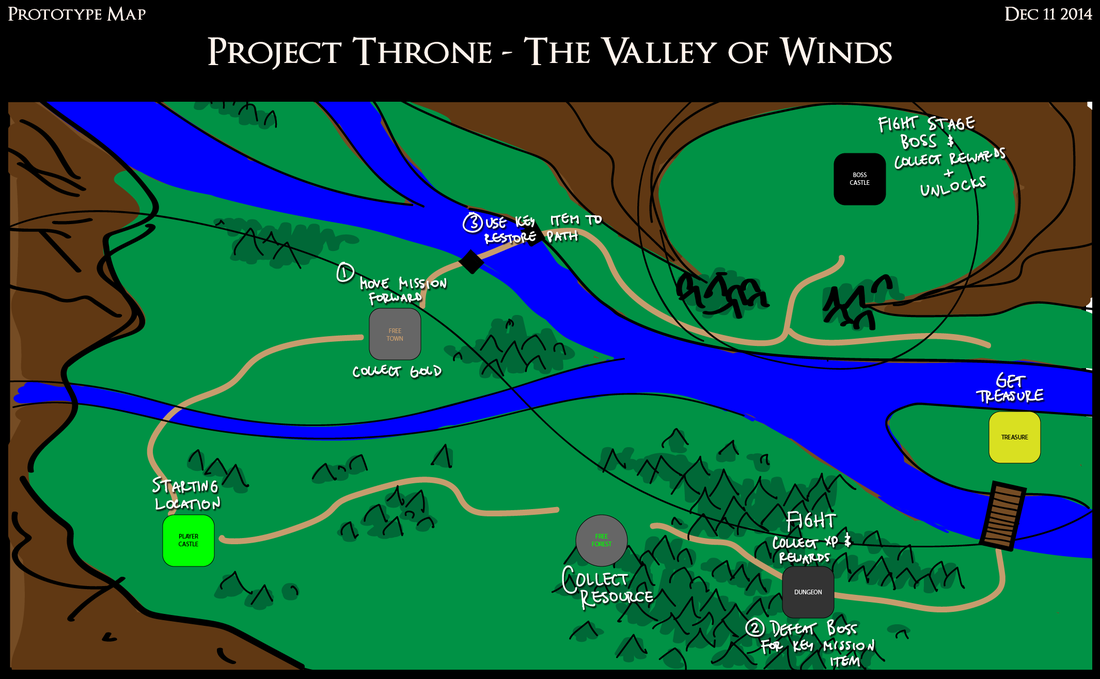The Inception of The Project
Project Throne is the culmination of creativity and experience between the 4 founders of Gumi Canada: Bobby Bath, Yann Cleroux, Chris Rowe and myself, Randolph Stayer.
The game began life under the code name Humans vs Zombies, which was our initial direction after a meeting with the Western head of development. It was suggested that we do what we know and stick to the themes we were comfortable with, coming from Capcom on Dead Rising.
After doing some simple research of the wild and looking at analytical data we quickly saw that the Zombie market in the mobile space was saturated with no major success stories. In contrast, the top 10 games in many regions and the top 10 worldwide were RPGs and puzzle games with fantasy settings. We decided at that time, that the audience for mature content on phones just wasn't there, especially for a non-licensed IP Zombie games. In contrast, the RPG market was filled with new IP.
Of course, while we were all still at Capcom, Brave Frontier was riding the Top 5 wave, both in Japan and The West. Why not follow it up with another RPG?
The game began life under the code name Humans vs Zombies, which was our initial direction after a meeting with the Western head of development. It was suggested that we do what we know and stick to the themes we were comfortable with, coming from Capcom on Dead Rising.
After doing some simple research of the wild and looking at analytical data we quickly saw that the Zombie market in the mobile space was saturated with no major success stories. In contrast, the top 10 games in many regions and the top 10 worldwide were RPGs and puzzle games with fantasy settings. We decided at that time, that the audience for mature content on phones just wasn't there, especially for a non-licensed IP Zombie games. In contrast, the RPG market was filled with new IP.
Of course, while we were all still at Capcom, Brave Frontier was riding the Top 5 wave, both in Japan and The West. Why not follow it up with another RPG?
Key art created by Bobby Bath and featuring Warlords from the game for the trailer that was presented at GDC
In The Very Beginning
It was early in the spring of 2014 when I was approached by Chris, my World Producer at Capcom and Bobby Bath, a Lead Artist at Capcom about an offer I couldn't refuse: join him to put together a studio and make a mobile game. It was an exciting, yet scary opportunity. I had been thinking about mobile games for a while, and looking at what was selling well and making headlines, regardless of region. Games like Puzzle & Dragons, White Rabbit (Rune Story), Brave Frontier, Chain Chronicle, Clash of Clans and Game of War were atop the charts and making a huge splash. It was clear that a game built with RPG and Strategy mechanics has a huge audience on phones and tablets. For us that meant an extremely deep metagame and a super-engaging battle system, as well as always active social gameplay mechanics.
And so it was that August 2014 was my last month at Capcom Vancouver. It was the end of an era for me, as I'd been making Dead Rising games for over 6 years at the company, and gone from environment artist to level architect to lead designer. It was a bitter-sweet ending, as I said goodbye to many trusted & respected co-workers and friends who fostered my professional growth.
I had a month and a half of time off before starting with Gumi on October 1st, 2015. I used that time to brainstorm ideas for what kind of game we could make with Gumi, since it sounded like they were looking at us to pitch an idea to them, rather than them tell us what to do. Bobby Bath and I met to discuss a few ideas that we'd brainstormed. After discussing 7 different ideas, we decided to go with one that was inspired by Dragon Force, for the Sega Saturn. It seemed to be the most unique in terms of RPG, and also shared some familiarities with modern games in terms of persistent worlds and social interactions.
We talked high-level design and I plotted it out as a mind map on my phone, pictured below
And so it was that August 2014 was my last month at Capcom Vancouver. It was the end of an era for me, as I'd been making Dead Rising games for over 6 years at the company, and gone from environment artist to level architect to lead designer. It was a bitter-sweet ending, as I said goodbye to many trusted & respected co-workers and friends who fostered my professional growth.
I had a month and a half of time off before starting with Gumi on October 1st, 2015. I used that time to brainstorm ideas for what kind of game we could make with Gumi, since it sounded like they were looking at us to pitch an idea to them, rather than them tell us what to do. Bobby Bath and I met to discuss a few ideas that we'd brainstormed. After discussing 7 different ideas, we decided to go with one that was inspired by Dragon Force, for the Sega Saturn. It seemed to be the most unique in terms of RPG, and also shared some familiarities with modern games in terms of persistent worlds and social interactions.
We talked high-level design and I plotted it out as a mind map on my phone, pictured below
The first semblance of the game existed as a mind map on my phone, contributed to by myself and the Art Director, Bobby Bath. We met in the afternoon at a Library and collaborated on the core idea of the game. We both agreed that a fantasy setting was for the best.
A Tempororary Office & The First Pitch
|
During the time in-between Capcom and Gumi Vancouver, we looked around for office space that fit the budget we were given. After looking through several proposals, we decided that setting up in the Metrotowers was the best idea. It was convenient to get to by bus and skytrain, and extremely convenient for shopping, as the Towers were connected to the Metrotown shopping mall. It was also a bit of a different vibe than being downtown, where most development studios were typically located.
On day 1, we had no computers, chairs or desks. We were put into a temporary office space called "Regus" which became a bit of a running joke as time went on because of how incredibly expensive it was for how tiny the space was, with nothing in it. The only part of it that was free, was the coffee in the kitchen. The best part about it was the view from the 26th floor. We were told it would take about 3 months before we would be able to move into our office on the 23rd floor. On day 2 we brought in our personal laptops (and Yann, his home PC with monitors!) and Chris began working to get us set up with computers, chairs, desks, devices etc. Chris and Yann were brought up to speed regarding all the pitches that Bobby and I discussed previously. |
After some creative discussion, we immediately started working on new pitch documents for our game, as AJ Redmer, the head of the west would be coming the following week to spend a few days with us to give us some direction, and plan out the schedule for the first few months. When AJ arrived, with a few other people along for the ride, on day 1 he presented to us some of the pitches that other studios had presented. We were a bit shocked at the lack of quality, coming from console and working with Capcom, we were used to creating professional documents. It was clear to us that AJ was looking for us to retain some of our identity coming from Dead Rising, so we worked a bit of "undead" into the design. We were also told that AJ's studio, Gumi Austin, would become a centralized studio for QA, User acquisition and live operations, so we wouldn't have to worry about these at the Gumi Vancouver office.
Below is the pitch document that I constructed with Bobby and the rest of the team. It was extremely well received, as we'd expected after seeing what the other studios had pitched.
Below is the pitch document that I constructed with Bobby and the rest of the team. It was extremely well received, as we'd expected after seeing what the other studios had pitched.
The first pitch for Project Throne, which you can see was Undead Throne at this point. Click to download
Off to Tokyo, Japan
AJ told us that we would be headed to Japan for the last week of October to pitch Undead Throne to the CEO and CFO as well as a round-table of other developers, advisors, and financial people. That left us with 2 weeks to prepare everything that we needed.
For me, that meant crafting something together so that everyone could understand the vision for the game and how we planned for it to make money. I did not have much at my disposal, since the art direction and technical direction were still very much being researched. Without prior knowledge of Unity or how to make a prototype using code, I went forwards with making an animated presentation in MS Powerpoint to show off our grand vision for the game.
We were all super excited to be going to Japan! We arrived about 9pm on the 22nd of October. The plane ride was long, and cramped, but all that was forgotten the moment we got in the cab to head to our Hotel. After a sleepless night we entered Gumi HQ at about 10am, and after a few introductions of the various teams and team leads, we were headed out to a spectacular lunch.
For me, that meant crafting something together so that everyone could understand the vision for the game and how we planned for it to make money. I did not have much at my disposal, since the art direction and technical direction were still very much being researched. Without prior knowledge of Unity or how to make a prototype using code, I went forwards with making an animated presentation in MS Powerpoint to show off our grand vision for the game.
We were all super excited to be going to Japan! We arrived about 9pm on the 22nd of October. The plane ride was long, and cramped, but all that was forgotten the moment we got in the cab to head to our Hotel. After a sleepless night we entered Gumi HQ at about 10am, and after a few introductions of the various teams and team leads, we were headed out to a spectacular lunch.
The 4 founders from Gumi Canada, out for lunch in Japan with AJ the Head of Western Development and other key contributing members
It wasn't until we returned from lunch that we finally sat down with leaders of Gumi to pitch our game idea. It went for over an hour as we rolled out an initial presentation explaining at a high level what the game was that we wanted to make. They seemed to be engaged in what were showing and explaining to them. After the initial presentation, we rolled straight into my animated Powerpoint to walk them through what a play session with the game might look like.
Powerpoint presentation on core map and battle gameplay. Click for download
They were all thoroughly impressed with our professionalism, never having seen anything like what we showed and how we presented it. We got a verbal yes to our pitch from the CEO who was giddy with excitement.
Finally, a chance to breathe - the hard part was over. From this point on, we continued to show the presentation to other teams within Gumi. One team in-particular that we resonated with was staffed with former Square-Enix developers that had worked on some of our favorite games from the past.
After everyone was all smiles, we headed out for a memorable night on the town, and what a night it was! We'd met so many people that I couldn't remember everyone, but the best part of the entire trip for me, was getting to meet one of my most revered designers: Yukio Futatsugi, famous for cult hits like the Panzer Dragoon franchise (Sega Saturn) and Phantom Dust (Xbox). AJ Redmer knew him from the Xbox days, and brought him out for a drink with us that evening. We ended up talking (and drinking) until 3 am! it was amazing how much we had in common and how similar our tastes for games and entertainment were.
Finally, a chance to breathe - the hard part was over. From this point on, we continued to show the presentation to other teams within Gumi. One team in-particular that we resonated with was staffed with former Square-Enix developers that had worked on some of our favorite games from the past.
After everyone was all smiles, we headed out for a memorable night on the town, and what a night it was! We'd met so many people that I couldn't remember everyone, but the best part of the entire trip for me, was getting to meet one of my most revered designers: Yukio Futatsugi, famous for cult hits like the Panzer Dragoon franchise (Sega Saturn) and Phantom Dust (Xbox). AJ Redmer knew him from the Xbox days, and brought him out for a drink with us that evening. We ended up talking (and drinking) until 3 am! it was amazing how much we had in common and how similar our tastes for games and entertainment were.
On the left I am pitching Project Throne to gumi's internal Crystal Team developers, and on the right is Yukio Futatsugi and I.
Building the Prototype
After returning home, we proceeded to get started on our Prototype of the game. It was at this point that things really started to pick up. We listed open positions for Technical Artist, UI/UX Artist, VFX Artist and Animator. We quickly realized that it wasn't going to be easy, because nobody in the west had heard of Gumi, or know anything about them. We were told not to worry about this, as Gumi Austin would also be in charge of setting up the Western website for Gumi, which would encompass all western studios.
Up until Christmas that year, I set to work planning out the elements that would be required to make the game. I started creating a high level game design document to better understand what kind of systems the game would require. After this I put together three separate proposals for the team so that we could look at them and analyze which would be best suited for our Prototype. Initially my goal was to put together the entire core loop of the game, including monetization and economy. I quickly learned that we wouldn't have the staff or the time to pull off a full core loop of the game, so we all decided it would be best to show off what was special about Throne: The light map exploration and the battle mechanics.
Up until Christmas that year, I set to work planning out the elements that would be required to make the game. I started creating a high level game design document to better understand what kind of systems the game would require. After this I put together three separate proposals for the team so that we could look at them and analyze which would be best suited for our Prototype. Initially my goal was to put together the entire core loop of the game, including monetization and economy. I quickly learned that we wouldn't have the staff or the time to pull off a full core loop of the game, so we all decided it would be best to show off what was special about Throne: The light map exploration and the battle mechanics.
Click to download Prototype visual roll-out plan
Over the next three months, we slowly hired for all 4 positions. We were lucky enough to get Adam Hansen from Capcom, who took front runner position of coding battles, while Yann worked on the map gameplay. It was a good dynamic because Yann enjoyed playing RTS and RPG style games, and Adam enjoyed playing action RPGs and MMO's. As a team, we had many whiteboard brainstorm sessions surrounding the core compulsion loop, gameplay mechanics and progression designs. Along-side that we also met and talked/whiteboarded in great detail about the world/universe we wanted to create, what would inhabit it, and what sort of history might have ensued. Everyone was genuinely interested in what we were creating - I could hardly wait to get out of bed and get to work in the morning!
Before delivering the Prototype and Game Design Doc to Gumi HQ for review, I put together a Product Overview explaining in greater detail what the game was, and outlined some changes that had already been made from our initial presentation. Everything was written at a high level to inform Gumi and prepare them for what to expect from our Prototype.
Before delivering the Prototype and Game Design Doc to Gumi HQ for review, I put together a Product Overview explaining in greater detail what the game was, and outlined some changes that had already been made from our initial presentation. Everything was written at a high level to inform Gumi and prepare them for what to expect from our Prototype.
Click to download Game Concept Overview presentation
During the course of the Prototype I created:
- Game Data
- Characters (stats)
- Metrics (measurements)
- Skills (stats)
- Legions (stats, matrix)
- Legion Orders (stats)
- Time of Day cycle (durations with mechanics)
- Locations (payouts, requirements, stats)
- Game Documents
- Prototype Game Design Document
- Feature List
- Missions, Story & Lore Docs
- Game Glossary
- Audio Direction Document
- Map Design Best Practices
- Map Design Templates
- Product Beat Chart
Insert game docs
Beyond the creation of these items, I maintained the game vision across departments as everyone produced content for the game, which entailed daily reviews of their work, and the direction that it was headed. The team remained focused on creating a small slice of the game, while I remained disciplined enough to revoke the desire to scope creep. Each day, the team brought new ideas to add to the experience as well as fresh ways to solve old problems. It was a generally delightful time developing the game. We felt like a tight-knit family.
With that said, we also wanted to prove that core gamer's such as ourselves could be interested enough in a mobile game to want to play it for longer than a few days, and for longer than 5 minutes at a time. It became our running mission to make a game that appealed to mobile gamers looking to "grow into" a deeper gameplay experience.
With that said, we also wanted to prove that core gamer's such as ourselves could be interested enough in a mobile game to want to play it for longer than a few days, and for longer than 5 minutes at a time. It became our running mission to make a game that appealed to mobile gamers looking to "grow into" a deeper gameplay experience.
Playing the Prototype
The velocity of development went from what felt like a slog to full-steam ahead after we had a few people in the door that could get the ball rolling on building the game. It gave me a lot of time to do the documents required and plan for the longevity of the game at the same time.
It was several months and iterations of the game before we actually had something that was starting to resemble fun. The biggest change was in the game's pathing system. While I initially thought that shorter sessions would be easier had with smaller maps and focused on-rails movement, we found it more desireable to direct your movement throughout the map rather than be restricted.
Below is a quick mock-up of our Prototype map:
The image that started it all: the Prototype Map
As I designed the map, I also worked on building the data that would eventually power the statistics for the game under the hood. I worked with Yann to set up spreadsheets that would contain the data and blocked out some rough numbers to start out with. Beyond that, I was also planning out the systems, story and content for the rest of the game.
After hiring our first environment artist, we finally had a real in-game map to play on. It was at this point that most of the team started digging in and really plaing the game all the time. As the art started to roll in, we played the game constantly - making revisions to the stats for the three Warlords that it would eventually feature: Crimson Blade, Frozen Bones and Gloom Lich. Crimson Blade was tuned to be the overall average stats benchmark, where Frozen Bones was the heavy melee benchmark and Gloom Lich was the heavy magic benchmark.
One intersting thing about mobile development that we all really enjoyed was the simple fact that we could literally grab a build no matter where we were - at work, at home, out about - it greatly multiplied the available time to test our work, since the majority of our days were spent just setting everything up. Bobby and I often ended up messaging each other with our thoughts about the latest build during the evenings, giving us the information we needed to action when arriving at work the following morning. By far, one of the greatest advantages of mobile development.
By the time March rolled around, we all knew that we were on to something special. Everyone on the team was deeply invested in making it into something extraordinary.
